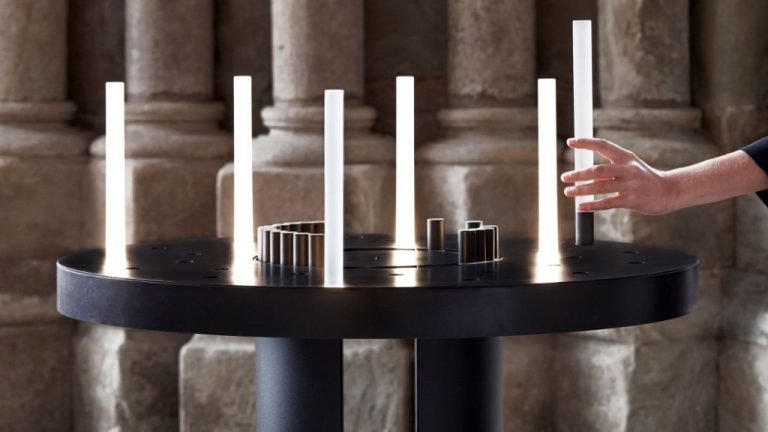Do You Cut The Wick Of A New Candle Bath And Body Works?
When lighting a brand new candle for the first time, it’s important to trim the wick to achieve optimal performance from your candle. The wick is the thin string that is embedded in the middle of the wax and you light it to ignite the candle. The wick is what draws the wax upward to produce the flame. When it’s a new candle, the wick starts off being quite long and if you light it before trimming it, the flame will be larger than intended and it can produce more smoke and soot.
Trimming the wick to roughly 1⁄4 inch before lighting a new candle for the first time helps it perform its best so you get a controlled flame size, more complete wax pooling, longer candle life, and less soot. Taking this quick first step of trimming the wick sets your candle up for success.
What Does the Wick Do?
The primary purpose of a candle wick is to deliver fuel to the flame through capillary action. The wick actually acts like a straw, drawing liquid wax up to the flame to keep it going.
The wick is made from braided fibers which create tiny pockets and channels in the structure. When the wax around the wick melts from the flame, it gets absorbed into these pockets and travels up the wick bringing more fuel to the flame.
If the wick length is too long, it will create a very large flame with increased smoke and more rapid wax melting. A properly trimmed wick helps manage the size of the flame for best performance of the candle, balancing how much wax is melted and how bright/tall the flame is.
Why Trim New Candle Wicks?
Trimming the wick before lighting a new candle for the first time serves some important purposes:
- It helps regulate flame size and minimize smoke. Untrimmed wicks tend to produce tall, sooty flames. Trimming promotes a shorter flame that burns cleanly.
- It prevents tunneling. Tunneling happens when the edges of the candle melt faster than the middle, creating a hole or tunnel in the wax. This is caused by an untrimmed wick that doesn’t melt the wax evenly.
- It makes candles last longer. With a trimmed wick, the wax burns more slowly and evenly. This allows you to enjoy the candle for longer before it runs out.
So remember to always trim your new candle wicks to about 1⁄4 inch before lighting to get the best burn performance.
How to Trim a New Candle Wick
Before lighting a new candle for the first time, it is crucial to trim the wick to the proper length in order to ensure a nice even burn.
BBW recommends trimming the new wick to about 1/4 inch before burning it for the first time. To trim the candle wick, you can use a pair of scissors or a tool made specifically for trimming candle wicks.
Typically, most candle wick trimmers will have a hole on the side meant to guide you to trim the wick to the correct 1/4 inch height. You can also use a small pair of nail clippers as an alternative method.
When trimming the wick, be careful not to cut it too short or this can cause issues like tunneling, poor wax melt, or not giving off any scent. A good rule of thumb is to leave the wick slightly longer than the visible wax pool width so that the entire candle burns cleanly and evenly from edge to edge.
Bath & Body Works Candle Wick Trimming
Before lighting any new Bath & Body Works candle, it is recommended to trim the wick to 1/4 inch in length. This will help ensure an even burn once the candle is lit. The majority of Bath & Body Works candles come with longer wicks that should be trimmed either with standard candle scissors or wick trimmers.
When trimming a new Bath & Body Works candle wick, follow the same general guidelines you would for trimming any other candle wick. Ensure the wick is cut straight across and not at an angle, with no stray fibers sticking out. This will reduce the risk of the wick curling or tunneling unevenly when burning.
When preparing to trim a Bath & Body Works candle wick, here are some tips to consider:
- Remove packaging and ensure candle wax has hardened
- Use sharp, clean trimming scissors or snuffer
- Grip wick straight and trim to 1/4 inch above wax pool
- Make clean cut and avoid leaving fibers
- Trim any secondary wicks as well
- Extinguish candle after 4 hours of burn time to avoid tunneling
Following these guidelines, along with the standard wick trimming procedures for any candle, will help ensure the Bath & Body Works candle burns evenly and safely while releasing its intended fragrance.
When to Trim Wick After First Burn
It’s recommended to trim the wick of your Bath & Body Works candle each time before lighting it. Trimming helps maintain an ideal burn and prevents issues like soot buildup or mushrooming of the wick.
Aim to trim the wick to around 1/4 inch before lighting for the first time and each subsequent burn. This well-trimmed height is optimal for getting a strong flame without allowing it to get too large and uncontrolled.
Trimming with each use allows the melted wax to pool evenly across the top of the candle. It also reduces excess carbon buildup on the wick, which can inhibit the capillary action needed for a sustained burn.
By taking just a minute to snip the blackened tip before each use, you’ll enjoy hours of delightful fragrance from your candle and avoid common problems like smoke, poor scent throw, or tunneling.
Signs Your Wick Needs Trimming
There are a few key signs that indicate it’s time to trim your candle wick:
Mushrooming or sooty wick: Do you notice black carbon deposits forming on the tip of the wick? This “mushrooming” happens when the wick gets too long, causing incomplete combustion. Trimming the wick will remove the carbonized tip and result in a cleaner burn.
Flame too high, smoking, or uneven: An over-long wick leads to a larger flame that is prone to smoking. The flame may also flicker unevenly or bend over sideways. Trimming the wick down to a 1⁄4 inch will stabilize the flame.
Tunneling wax: Deep pockets called tunnels can form in the wax around an extra-long wick, since the flame burns down into the wax. Trim back wicks at the first signs of holes or tunnels forming to allow wax to melt in that space.
Troubleshooting Wick Issues
There a few common issues you may encounter with your candle wick that can impede proper melting or burning of your candle. The good news is many of these issues can be resolved with some wick maintenance and troubleshooting tips:
Fix Tunnelling or Poor Wax Pools
If you notice your candle developing a deep hole or “tunnel” in the center rather than a nice even pool as it melts, your wick is likely oversized. Try trimming the excess off the wick to correct this issue and prevent further tunnelling.
Prevent Wick Drowning and Wax Bridges
Sometimes the melted wax can spill over and fully submerge your wick causing it to fizzle out – this is known as a “drowned wick”. Use a wood wick dipper or knife to gently lift and center your wick after melting. Break any hardened wax bridges that form around the wick.
Deal with Curled or Crooked Wicks
It’s common for candle wicks to get bent, curled or curve to one side while burning or cooling. Carefully use metal tweezers or needle nose pliers to gently straighten out any crooked wicks and restore proper positioning.
Safety Tips for Trimming Candles
When trimming the wicks of candles, especially new candles that have just been lit for the first time, it’s important to keep safety in mind. Here are some tips for safely trimming candle wicks:
-
Let wax cool before trimming – Before attempting to trim the wick, allow the entire candle to cool completely. Trim only once wax has fully hardened again. Trimming too soon risks hot wax dripping onto fingers.
-
Keep wick trimmers clean – Make sure to wipe off any bits of wax clinging to the wick trimmer before and after each use. This helps keep the tool from getting gunked up.
-
Be cautious of hot wax – Even if the candle surface wax feels cool, liquid wax close to the wick can still be hot right after blowing it out. Touch cautiously.
Following these simple precautions will allow for safe and easy wick trimming every time a candle is lit and extinguished.
Conclusion
In summary, properly trimming the wicks of candles is an important step in ensuring candles perform their best. A trimmed wick helps candles burn evenly, promotes full melt pools, minimizes excessive dripping or tunneling, and prevents soot or smoke issues. Trimming wicks before each use can make candles like those from Bath & Body Works last longer and be more pleasant to burn.
Taking those few seconds to snip candle wicks with the proper tool is a simple step that pays dividends through better performance, scent throw, and longevity. For the best results from a candle and to avoid many common wick issues, be sure to trim wick ends before each burn. This little routine can extend the life of any candle and improve the overall experience.
Trimming candle wicks takes very little time but yields valuable benefits. Following wick trimming best practices helps candles fully reach their potential. So do your candle a favor, make wick trimming a habit, and enjoy those beautiful flames lighting up your home.





